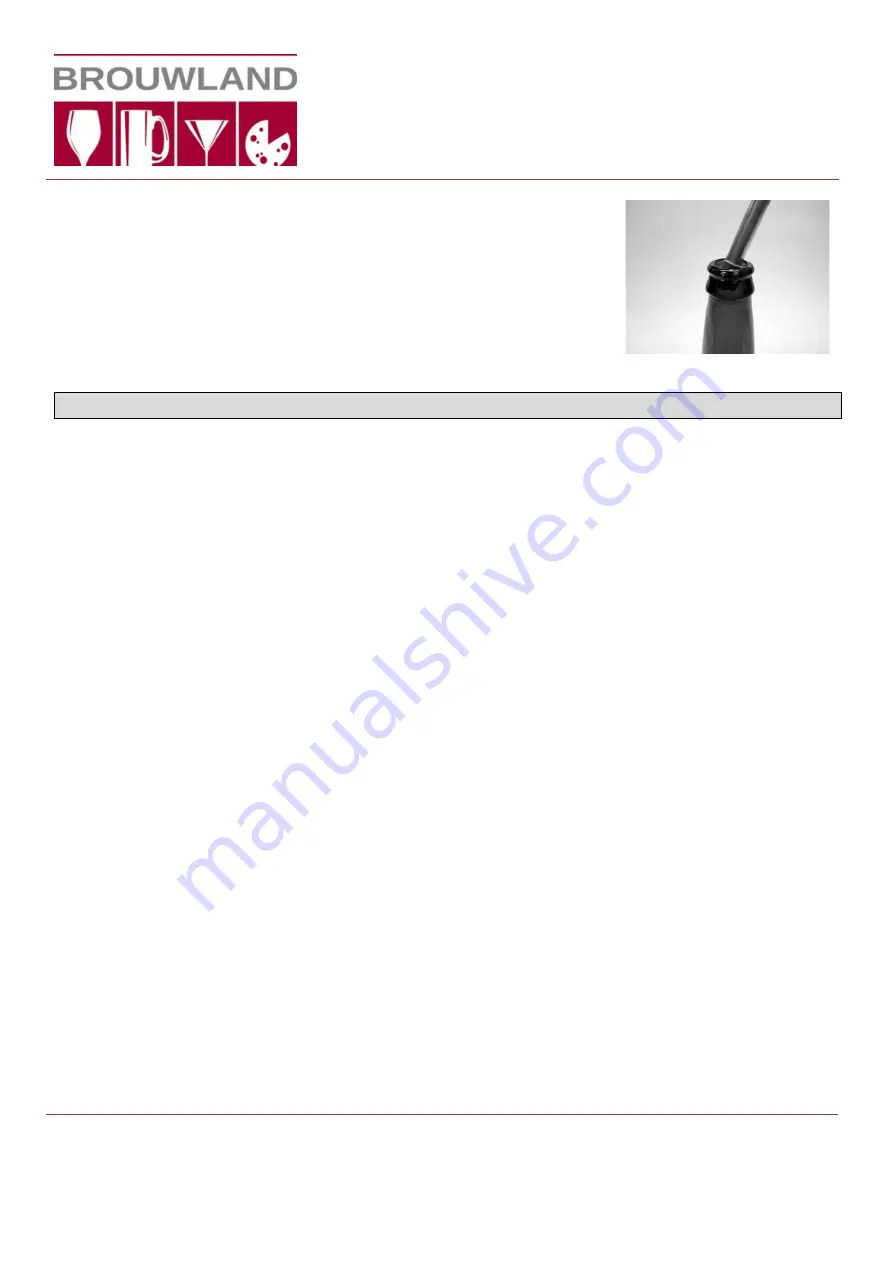
Place the tip of the filler into the head space as shown in Fig. 14, and
give it a quick shot of CO
2
to displace any air that has been drawn back
into the bottle.
Cap and move to the next bottle! With practice, it takes about 20-30 sec
to fill and cap a 12oz bottle. If you have minimal foaming and wish to
dispense at a faster rate, increase the CO
2
pressure. If foaming is
excessive, reduce the pressure.
Trouble-shooting
Excessive foaming
a) QUICKLY open and close the beer trigger
b) Ensure bottles are at the same temperature as the beer
c) Ensure all hoses, clamps and fittings on the beer side are tight and not letting air into the system
d) Reduce the dispensing pressure until foaming reaches an acceptable level
e) Highly carbonated or high protein beers (like wheat, oats etc) are difficult to fill so patience is
needed
f) Ensure that 10 ft of 3/16” ID hose is used to reduce the beer pressure on the way to the filler
If you are still experiencing foaming, we have found that nearly always it is a result of over-carbonated
beer. Over-carbonated beer contains more CO
2
in solution than is stable at the given pressure and
temperature. Any change in pressure or increase in temperature will cause this excess CO
2
to come
out of solution causing excessive foaming and gas bubbles in the beer line. Therefore, when
carbonating your beer, DO NOT “speed gas” it by applying more than the dispensing pressure. There is
no way to control the amount of CO
2
entering the beer using this method! Apply the correct amount of
pressure (typically 8-12 PSI) and let it sit for a week or so to carbonate. If you do want to speed it
along, you can roll/shake the keg, but DO NOT exceed the recommended pressure for your desired
carbonation level. Most Home brewing books contain carbonation charts. If you believe you have over-
carbonated your beer, you will need to vent the excess gas over several days by removing the CO
2
and
pulling the pressure relief valve on the top of the keg. Do this several times per day until you have
vented the excess carbonation.
Mechanical
Beer tube is sticking – the hole in the brass elbow is sized for a tight running fit to minimize CO
2
leakage during bottle purge, and is checked at the factory for satisfactory movement. Check to see
that the CO
2
tube is installed square to the brass elbow. If this does not eliminate the sticking, check
to see if the beer tube is bent by rolling it on a very flat surface such as a machined table saw or
granite counter. A slight bend can be carefully removed. If this does not resolve the problem, contact
Brouwland.
Beer/CO
2
clips come off tube in use. The clips are made of a heat-treated stainless steel, but can still
be permanently deformed. If this has happened – very gently bend them back together with a pliers, a
little bit at a time until it snaps on firmly by hand. To prevent this, do not pull unnecessarily hard on
the trigger, and do not force the clips aggressively onto the grooves.
Brouwland
Korspelsesteenweg 86 • B-3581 Beverlo - Belgium
Tel. +32-(0)11-40.14.08 • Fax. +32-(0)11-34.73.59
[email protected] • www.brouwland.com
Manual
058.121.4 Bottle-filler Beergun with accessory kit
058.122.3 Bottle-filler Beergun
Fig. 14
7 / 8










































